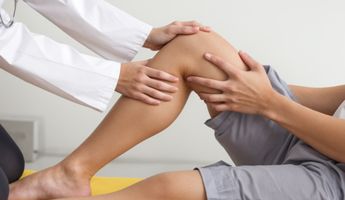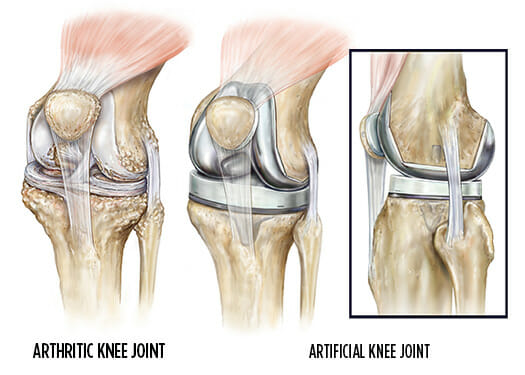Knee Replacement in Berlin
Search and Compare the Best Clinics and Doctors at the Lowest Prices for Knee Replacement in Berlin

Find the best clinics for Knee Replacement in Berlin
With Medijump you can browse 6 facilities offering Knee Replacement procedures in Berlin. The cheapest price available is $9,361 in Munich
Knee Replacement in Germany
Price: $ 9,361
Knee Replacement in Munich
Price: $ 9,361
Knee Replacement in Hildesheim
Price: $ 12,282
India offers the best prices Worldwide
Price: $ 2,050
From 46 verified reviews
Murad El fares, 19 September 2020
Bei unserem Besuch ist uns vor allem die 1a Hygiene, Professionalität des Arztes und der sehr netten und authentischen Arzthelferinnen aufgefallen. Wir haben sofort einen Termin für meine Tochter bekommen. Wir waren mit der kompetenten Behandlung und der Ausstrahlung, die Dr. Karajoli auf Kindern hat sehr zufrieden. Also im allgemeinen haben wir uns dort sehr wohl gefühlt und kommen gerne wieder.
From 162 verified reviews
David Meyer, 16 September 2020
I'm super satisfied, clearly waiting in the rescue center cannot be avoided. But the nurses and the doctor were very nice and competent. I went there with a severe earache and received gentle treatment.
From 147 verified reviews
conny Schmelzer, 13 September 2020
Kudos to the outpatient surgery station, everything was explained, very nice team, I felt very well looked after. I was met by very friendly nurses at Ward 15. The further care on the ward is also very, very pleasant.
Sporthopaedicum Clinic, located in Bismarckstrasse, Berlin, Germany offers patients Knee Replacement procedures among its total of 61 available procedures, across 1 different specialties. Currently, there's no pricing information for Knee Replacement procedures at Sporthopaedicum Clinic, as all prices are available on request only, whilst the national average price is approximately $10,821. There are many specialists available at the Clinic, with 6 in total, and they are accredited by ISO 9001:2008
Capital Health - CityPraxen Berlin, located in Karl Liebknecht Str E, Berlin, Germany offers patients Knee Replacement procedures among its total of 60 available procedures, across 16 different specialties. Currently, there's no pricing information for Knee Replacement procedures at Capital Health - CityPraxen Berlin, as all prices are available on request only, whilst the national average price is approximately ฿389,429. There are many specialists available at the Clinic, with 12 in total, and they are not accredited by any recognized accreditations institutes
Clinic for Special Orthopaedic & Trauma Surgery, located in Bismarckstrasse, Berlin, Germany offers patients Knee Replacement procedures among its total of 5 available procedures, across 2 different specialties. Currently, there's no pricing information for Knee Replacement procedures at Clinic for Special Orthopaedic & Trauma Surgery, as all prices are available on request only, whilst the national average price is approximately $10,821. All procedures and treatments are undertaken by just a small team of specialists, with 2 in total at the Clinic, and they are not accredited by any recognized accreditations institutes
WHY US?
At Medijump, we're making medical easy. You can search, compare, discuss, and book your medical all in one place. We open the door to the best medical providers worldwide, saving you time and energy along the way, and it's all for FREE, no hidden fees, and no price markups guaranteed. So what are you waiting for?

Free

Best Price

Widest Selection

Risk-Free
What you need to know about Knee Replacement in Berlin

Arthroplasty or Knee Replacement is a surgical procedure involving the exchange of a damaged and weakened knee joint with an artificial one. It is commonly performed for different types of arthritic knee diseases such as osteoarthritis, rheumatoid arthritis, and psoriatic arthritis mostly brought on by old age. Other causes can be accidents which lead to meniscal tears, joint dislocation, ligament tears, and cartilage damage. Osteoarthritis is the most common cause of knee replacement. Genu Valgus and Genu Varus can also be treated by surgery. Arthroplasty can either be partial (Partial Knee Replacement [PKR]) or complete (Total Knee Replacement [TKR]) depending upon the degree of damage.
The choice to proceed with a Knee Replacement is often brought on by ongoing discomfort and diminished mobility. This Knee Replacement involves a surgical procedure with the intention to diminish pain and revive the functionality of the joint.
What is the cost of Knee Replacement in Berlin?
Comprehending the expenses affiliated with Knee Replacement in Berlin is of utmost importance. These expenses can widely fluctuate due to various elements like the variety of replacement required, medical complexity, fee of the surgeon, hospital bills, and expenditure on post-treatment care. These ordinarily incorporate charges for the surgeon, hospital accommodation, anaesthesia, medications, and physiotherapy sessions.
The cost might emerge as a vital deciding point for many, but it's crucial not to overlook that Knee Replacement holds the potential to significantly upgrade one's lifestyle, primarily for those grappling with persistent pain and limited movement. Consequently, evaluating the expense against the foreseen benefits is essential when reaching a final verdict. Search for clinics in your area through our website.
What does a Knee Replacement Procedure Involve?
The front of the knee joint is exposed by detaching a portion of the patellar tendon. This makes the patella visible which is displaced to one side. In this way, the distal end of the femur and the proximal end of the tibia become visible. Cutting guides are used to cut the bones in the appropriate shape and size. Cartilages and anterior cruciate ligaments are ligated. The posterior cruciate ligament might also be removed depending on the type of surgery. While fibular and tibial collateral ligaments are conserved anyway. After this, artificial metallic components are surgically implanted at the joint. A substance called polymethylmethacrylate (PMMA) cement is used to fix the metallic parts at the exact place. Besides this cement, porous metal prostheses and Osseointegration methods can also be used.
How Long Should I Stay in Berlin for a Knee Replacement Procedure?
This is a 1 to 3-hour procedure after which you have to stay at the hospital for 1 to 4 days. You may suffer from severe pain which needs to be managed with the assistance of your medical team and physio will be required to help recover the movement. The period of stay in the hospital may vary depending on the type of surgery. Complete knee replacement needs more care and healing time as compared to partial knee replacement.
Also, your physical condition and willpower contribute to your stay at the hospital. Once discharged, you will need to stay local for at least 10-14 days for follow-up procedures and early-stage physio, as the first week is so important to the full recovery. Effective recovery is an essential part of the Knee Replacement.
What's the Recovery Time for Knee Replacement Procedures in Berlin?
6 weeks are required for complete recovery, however, it may take 3 months for inflammation and pain to subside and the knee continues to repair up to 2 years after the surgery. During the first 6 weeks, you cannot walk properly and experience pain and inflammation, therefore, walking aids such as walkers, crutches, walking sticks, etc. will be required. You can start walking again 12 to 24 hours of surgery with the help of your medical assistant. You can drive again 4 to 6 weeks after the operation. The replaced knee can work for 15 years after which metallic parts wear out and start causing problems. Note that the recovery from Knee Replacement is a gradual process and varies from person to person.
What sort of Aftercare is Required for Knee Replacement Procedures in Berlin?
The following points should be kept in mind for the aftercare of a knee transplant patient:
- After being discharged from the hospital, follow-ups should be attended regularly.
- Take prescribed medicines to manage pain and Inflammation.
- In the first few days, you have stitches and bandages around the operated part. Avoid contact with water when the bandage is still in contact.
- Make sure you have someone at home to look after you. Someone to help you walk around.
- Use walking aids in the beginning but gradually subside their use.
- Physiotherapy is very helpful. Go for an expert physiotherapist to help you heal faster.
- Do regular exercises to prevent stiffness of the joint. This helps in the smooth movement of the joint.
- Try not to sit with crossed legs. It can be damaging to your new joint.
- Avoid bending at your operated knee.
- Ice packs are useful in reducing swelling.
- Do not sleep with a pillow under your knee. This might result in permanent bending of the joint.
- Follow a healthy diet plan made by an expert. Because a loss of appetite might show up after surgery.
- Avoid the things which can cause infections such as dental procedures.
- Live on the ground floor. Avoid using stairs to prevent falls or any other accident.
What's the Success Rate of Knee Replacement Procedures in Berlin?
More than 90% of people who have gone through a knee replacement surgery told that they have a tremendous amount of relief in pain and their ability to walk around. 85 to 90% of surgeries are reported to be successful. 60% of these surgeries were undergone by women. The probability of positive outcomes hinges primarily on elements like the degree of injury, an individual's general wellbeing, and compliance with recovery and subsequent care.
Are there Alternatives to Knee Replacement Procedures in Berlin?
This is the best solution for severe and continuous aching of the knee, but the following are some non-surgical alternatives you may consider first:
- Acupuncture: this is an ancient method that uses needles to stimulate different nerves changing the flow of energy in your body. This helps in relieving pain.
- Prolotherapy: in this therapy, an irritant such as dextrose is injected into the tendon or the ligament. It provides nutrition to the tissue and increases its blood flow. Which results in decreased pain.
- Stem Cell Therapy: stem cells are injected within the joint which regenerates its cartilage. This helps repair the damaged knee.
- Plasma-Rich Protein Injections: blood is taken from you and centrifuged to remove platelets which are rich in growth factors. These growth factors are then injected into the joint. Pain relief has been reported using this therapy.
- Hyaluronic Acid Injections: these injections increase the lubrication at the knee joint allowing smooth movements. This reduces pain due to friction.
- Physiotherapy: it increases joint mobility. Exercise should be done under the supervision of an expert physiotherapist for better results.
- Cortisone Shot: steroids are injected into the joint to decrease inflammation which aids in smooth movements.
- Bracing: braces are metallic, leather or plastic devices that provide external stability and support to the joint. This braces the joint from the outside and applies pressure onto it aligning the bones. This reduces inflammation as well as pain.
What Should You Expect Before and After the Procedure
Gearing up for a Knee Replacement necessitates a set of actions before and after your surgery. Prior to the operation, your medical professional will carry out a thorough assessment, possibly encompassing bloodwork, imaging studies, and physical check-ups to assert your readiness for the procedure. Upholding a healthy lifestyle, inclusive of a balanced diet and regular exercise, in the prep time before surgery is also vital.
Following the Knee Replacement, the spotlight moves to post-operative care and recovery, involving physical therapy, wound management, and pain control. Staying active and exhibiting a positive mindset substantially aids in your recuperation process. Adherence to your medical professional's directives and prompt communication of any problems or issues is paramount.
What are Potential Risks of Knee Replacement?
Similar to any medically invasive procedure, Knee Replacement is associated with possible hazards and complexities.
Typical hazards encompass:
- Contagions
- Blood clot formation (can lead to a pulmonary embolism and ultimately death, though this is extremely rare)
- Nerve impairment
- Difficulties resulting from sedative application.
- Some clients may additionally encounter rigidity in the knee or face challenges in achieving the prior knee bending motion.
Knee replacement surgery can go wrong if there is an infection, however, only 2% of cases are reported in which severe knee joint infections prevail. The risk of infection and clot formation increases with age.
Whilst the information presented here has been accurately sourced and verified by a medical professional for its accuracy, it is still advised to consult with your doctor before pursuing a medical treatment at one of the listed medical providers
No Time?
Tell us what you're looking for and we'll reachout to the top clinics all at once
Enquire Now

Popular Procedures in Berlin
Prices Start From $1,376

Prices Start From $218

Prices Start From $614

Prices Start From $100

Prices Start From $1,709

Recommended Medical Centers in Berlin for Knee Replacement

- Interpreter services
- Translation service
- Religious facilities
- Medical records transfer
- Medical travel insurance
- Health insurance coordination
- TV in the room
- Safe in the room
- Phone in the room
- Private rooms for patients available

- Interpreter services
- Translation service
- Religious facilities
- Medical records transfer
- Medical travel insurance
- Health insurance coordination
- TV in the room
- Safe in the room
- Phone in the room
- Private rooms for patients available

- Interpreter services
- Translation service
- Religious facilities
- Medical records transfer
- Medical travel insurance
- Health insurance coordination
- TV in the room
- Safe in the room
- Phone in the room
- Private rooms for patients available

- Interpreter services
- Translation service
- Religious facilities
- Medical records transfer
- Medical travel insurance
- Health insurance coordination
- TV in the room
- Safe in the room
- Phone in the room
- Private rooms for patients available

- Interpreter services
- Translation service
- Religious facilities
- Medical records transfer
- Medical travel insurance
- Health insurance coordination
- TV in the room
- Safe in the room
- Phone in the room
- Private rooms for patients available

- Interpreter services
- Translation service
- Religious facilities
- Medical records transfer
- Medical travel insurance
- Health insurance coordination
- TV in the room
- Safe in the room
- Phone in the room
- Private rooms for patients available

- Interpreter services
- Translation service
- Religious facilities
- Medical records transfer
- Medical travel insurance
- Health insurance coordination
- TV in the room
- Safe in the room
- Phone in the room
- Private rooms for patients available
Knee Replacement in and around Berlin
About Berlin
Berlin is the capital and the largest city of Germany and with over 3.7 million inhabitants; it is the second-most populous city of the European Union after London. It is an alpha city of culture, politics, media, and science. The metropolitan city is also a popular tourist destination, thanks to its rich history, vibrant culture, lively parties, delightful food, and incredible architecture.
Today, Berlin is one of the most popular destinations for medical tourism. The number of medical tourists coming to the city increases each year. Most of them travel from Poland, the Netherlands, France, and the Middle East. Some of the more popular treatments are oncology, cardiology, dentistry, and even tummy tuck. Although the cost is considerably higher than the neighboring countries such as Hungary, medical tourists still come for high-quality treatment with cutting-edge technology. Thousands of medical tourists prefer Berlin for the following reason:
- A patient-focused health-care system with a wide range of treatment.
- Qualified doctors, surgeons, nurses, and other medical practitioners.
- Hospitals equipped with modern technology.
- Higher quality treatments, care, and services.
- Attractive destination and environment, perfect for rejuvenating and recovery.
Popular Areas in Berlin
As a famous tourist destination, Berlin has numerous attractions to see and many things to do. Whether you want to indulge in its culture, eat its food, or have a non-stop party, there will always be something for you.
- Museum Island (Museumsinsel) is a UNESCO World Heritage Site. It is a unique group of five world-renowned museums and it is the perfect place for those who love history and culture. From Ancient Egyptians, Roman Antiquity, the civilizations of the ancient Greek, Christian, and Islamic arts, to 19th Century European Art is available to see in the museums.
- Brandenburg Gate is Berlin’s most famous landmark. This 18th-century neoclassical monument used to symbolize divided Germany during the cold war since the Berlin Wall shut off access to the gate for both East and West Germans. Now, it has turned into a symbol of unity.
- Berlin Wall Memorial is located in the middle of the city where East and West were once divided. The memorial extends along 1.4 kilometers of the former border strip and contains the last piece of the Berlin Wall. The historical remnants and traces of borders are preserved on display so visitors can see and learn more about the history behind it.
- Berlin Cathedral (Berliner Dom) is the biggest church building in Berlin. The architecture and interior will leave visitors in awe. The architect, Julius Raschdorff, used the style of the Italian High Renaissance and Baroque elements. The interior is magnificent with marble columns and golden ornaments in abundance.
- Glass Dome of the Reichstag is an architectural masterpiece constructed on top of the rebuilt Reichstag building. The rooftop terrace and dome offer an outstanding view of the parliamentary and government district as well as Berlin’s skyline. There is also a restaurant on the rooftop.
Weather and Climate in Berlin
Just like the rest of Germany, Berlin enjoys four distinct seasons, making it a year-round destination for tourists. Spring starts around March and ends in May. This season is characterized by the arrival of cherry blossoms and the increase of the temperature. The temperature is around 4.3 °C in early March and will get as warm as 19.4 °C in May.
Summer runs from June to August with an average temperature of 24 °C but can get as high as 30 °C in the hottest days. This season is the peak of tourism because people can enjoy outdoor activities, so prices can be a lot higher than usual.
The months of September and November are Autumn. The weather in this season is similar to summer, which is warm and pleasant. However, the temperature can drop significantly in late November. Tourists usually visit the city during autumn for the Oktoberfest.
Winter in the city can be freezing, cloudy, and wet. The temperature can plummet to -10 °C on the coldest days. The city is generally very festive during this season, thanks to the Christmas spirit.
Getting Around in Berlin
Berlin has two main airports: Berlin Tegel Airport and Berlin Schönefeld Airport. The main international airport is the Berlin Tegel Airport located in the northwest. The airport serves domestic flights to other cities in Germany and international flights to almost every major city around the globe. Berlin Schönefeld Airport is the secondary airport that mainly serves budget airlines such as EasyJet and Ryanair. It is also an international airport that operates domestic and international flights. To get to the city center from both airport, bus, train, taxi or car are available.
To get around Berlin, there are various transportation modes to choose from. The main means of transport in the capital is the U-Bahn system, which comprises 9 metro lines and 173 stations. During peak hours, trains run every two to five minutes and every ten minutes in the evening and on Sundays. Along with the U-Bahn, the S-Bahn system is also one of the main means of transport. It has 15 lines serving 166 stations and has a longer average distance between station than the U-Bahn.
Tourists can also ride the tram and the tram lines mostly operate in the eastern neighborhoods since the tram lines in the former West Berlin were replaced by bus and U-Bahn. The tram lines operate 24 hours a day in some areas.
The bus in Berlin has around 151 lines running every 10 minutes for 24 hours. The buses also replace metro trains during closing hours. Taxis can be found easily enough around the city, with more than 7,000 taxicabs. The taxis can be identified by the beige or ivory color. The base fare is 3.90 EUR and tourists can hail the taxis from the street, by phone, or via an app. Other transportation such as Ferry, car sharing, and e-scooter is also available.
Tourist Visas in Berlin
The citizens of Australia, Canada, Israel, Japan, New Zealand, Poland, the United States, and Switzerland can enter and stay in Berlin for up to 90 days. Since Germany is a member of the European Union, citizens from other European Union countries do not need to obtain a visa to enter. Citizens of other countries need a Schengen Visa. It is advisable to always check the requirements for Germany Visa Application before applying.
Additional Information
- Local Currency: The official currency is the euro (EUR). 1 USD is equivalent to 0.81 EUR.
- Money & Payments: Tourists can find ATMs almost everywhere within the city. Although credit card acceptance is growing, remember that cash is king in the city. Therefore, it is best to always carry some cash. Note that it is considered rude to leave a tip on the table. You should tell the server the total amount you want to pay. For a good restaurant service, a 10% tip is acceptable. For taxis, tourists can tip 10%, rounding to a full euro.
- Local Language: German is the official language. Most people in the city will speak English, in hotels, restaurants, and shops.
- Local Culture and Religion: Over 60% of Berlin’s population has no religious affiliation, while 30% identified as Christian.
- Public Holidays: As most of German, Berlin celebrates major Christian religious holidays such as Easter and Christmas.
Popular Searches
- Plastic Surgery in Thailand
- Dental Implants in Thailand
- Hair Transplant in Thailand
- Breast Augmentation Thailand
- Gastric Sleeve in Thailand
- Gender Reassignment Surgery in Thailand
- Laser Hair Removal in Bangkok
- Botox in Bangkok
- Dermatology in Bangkok
- Breast Augmentation in Bangkok
- Coolsculpting in Bangkok
- Veneers in Turkey
- Hair Transplant in Turkey
- Rhinoplasty in Turkey
- Stem Cell Therapy in Mexico
- Rhinoplasty in Mexico
- Liposuction in Mexico
- Coolsculpting in Tijuana
- Rhinoplasty in Korea
- Scar Removal in Korea
- Gastric Sleeve in Turkey
- Bone Marrow Transplant in India
- Invisalign in Malaysia
- Plastic Surgery in the Dominican Republic
- Tummy Tuck in the Dominican Republic
- Plastic and Cosmetic Surgery in Poland
- Rhinoplasty in Poland
- Hair Implant in Poland
- Dental Implants in Poland
- IVF in Turkey





